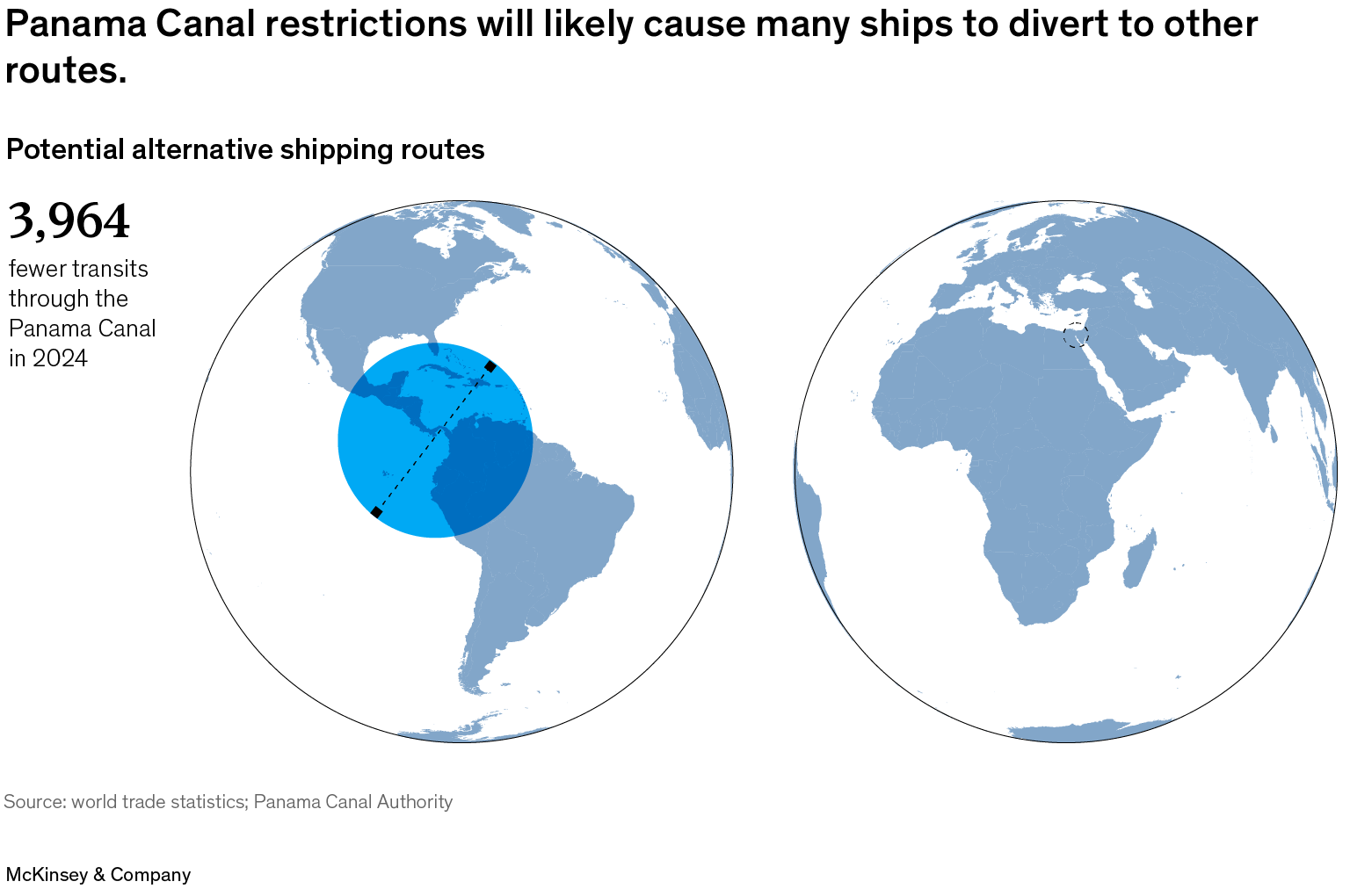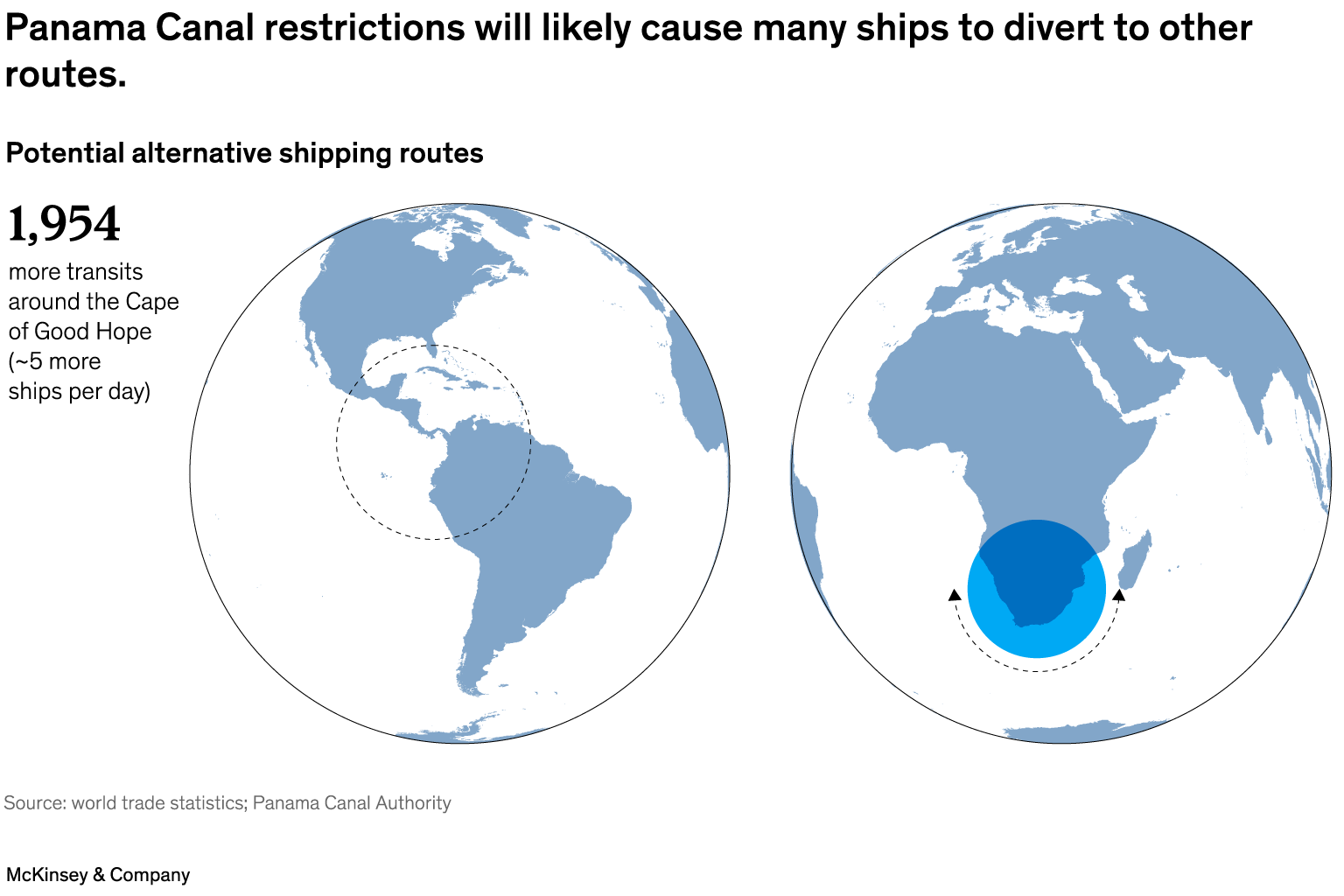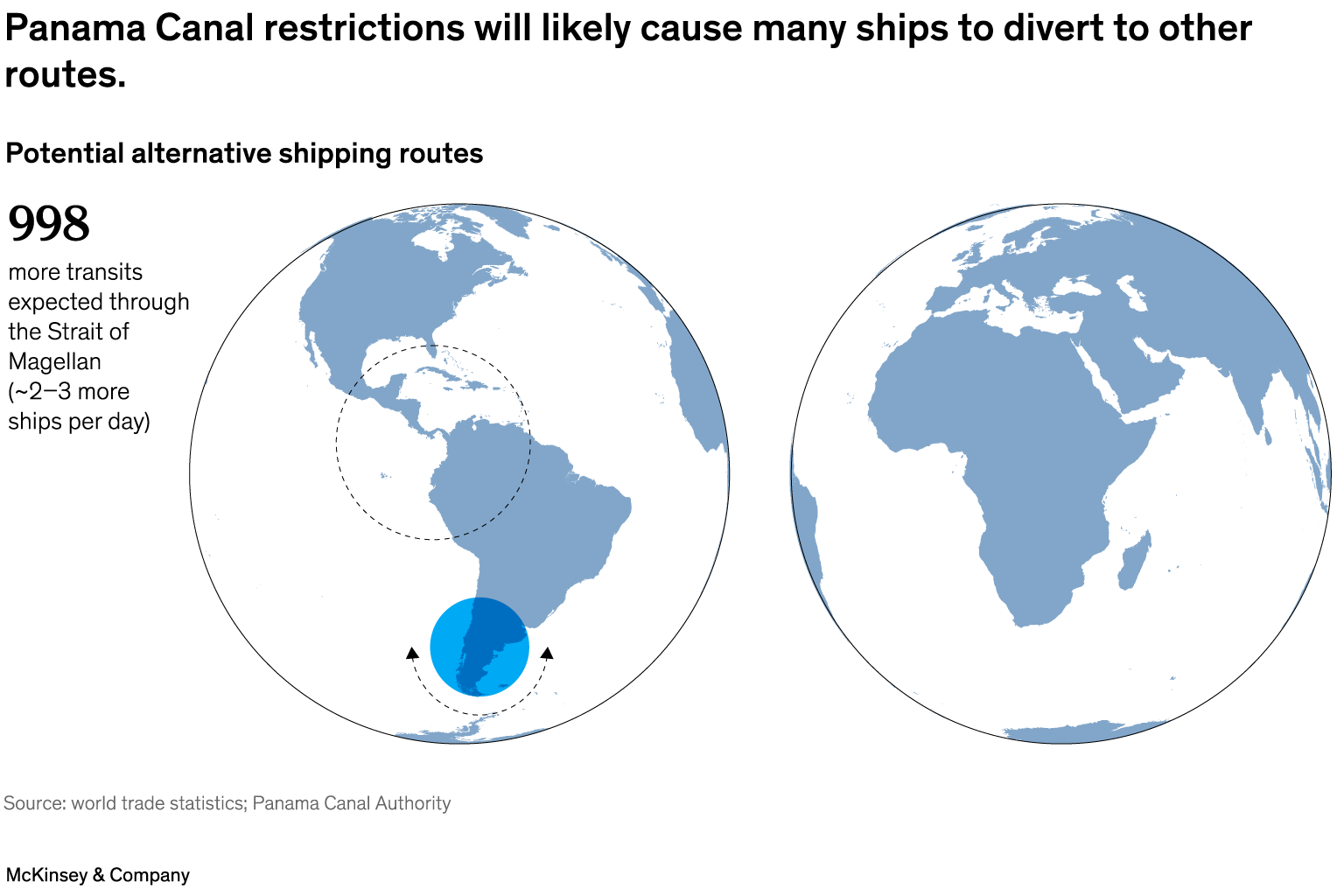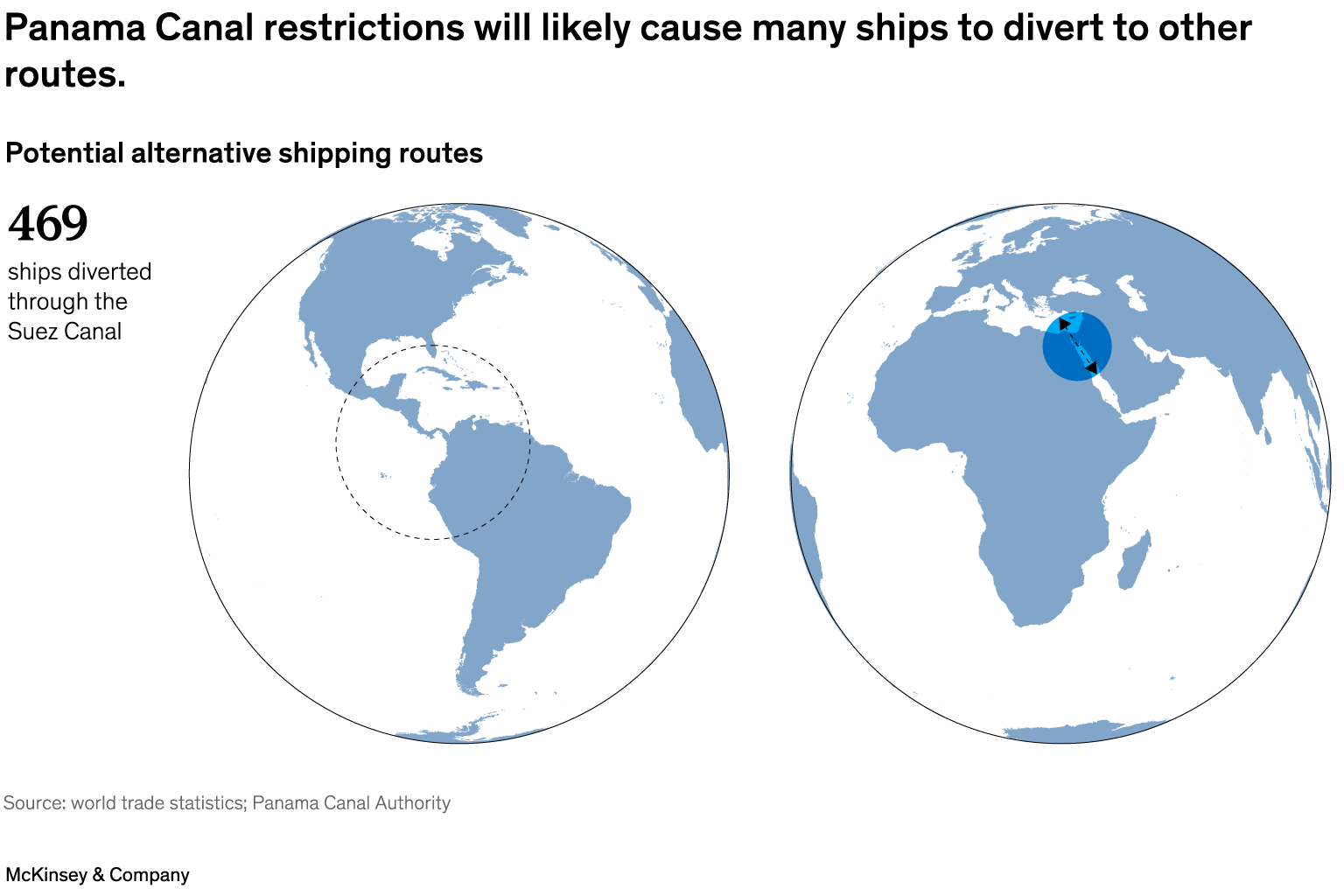The situations at the Panama Canal and Suez Canal are rapidly evolving and inherently uncertain. As a result, this article and the data and analysis it sets out should be treated as a best-efforts perspective at a specific point in time, which seeks to help inform discussion and decisions. The article does not set out economic or geopolitical forecasts and should not be treated as doing so.
Since its opening in 1914, the Panama Canal has played a vital role in world trade. An estimated 2.5 percent of global seaborne trade sails through its locks in an average year. In 2023, there were more than 14,000 vessel transits on this pathway between seas.
The operation of the canal’s locks (which use gates to raise or lower water levels in different sections of the canal) depends on water from Gatun Lake. Severe drought conditions in the region have lowered the lake’s water levels, leading the Panama Canal Authority (ACP) to restrict the daily number of ship transits. Prior to these restrictions, an average of about 36 vessels per day moved through the canal. In its most recent guidance, the ACP announced that transits will be limited to 24 slots per day, as of January 16, 2024. All vessels hoping to cross the canal will need to pay a booking fee, either in advance or through an ACP auction.
Reducing the volume of canal transits by about one-third will reshape seaborne trade flows. Roughly 100 million tons of cargo (equal to about 35 percent of the cargo that traversed the canal in 2022) could be affected. Many ships could divert to alternate routes. This could mean longer sailing durations and increased costs.
The situation at the canal is in flux: the ACP has updated its guidance multiple times in response to rainfall events in the region, and it has yet to offer definitive guidance on when its restrictions will be lifted. In the meantime, companies whose supply chains are dependent on the canal will need to find ways to adapt.
This disruption coincides with uncertainty surrounding the Suez Canal—another important global trade transit point—as destabilization in the Red Sea region has spurred some shipping companies to pause Suez crossings. The combined impact of simultaneous slowdowns at these two major canals could be significant. When a grounded container ship blocked the Suez Canal for just six days in 2021, an estimated $9.6 billion dollars in trade was held up each day, creating knock-on effects in the global economy.
Below, our analysis examines how a Panama Canal slowdown could affect various trade segments and stakeholders. We’ve modeled for the short term, based on typical trading patterns, but over time we expect sourcing decisions to shift in response to the ACP’s restrictions (and potentially also in response to developing conditions around the Suez).
The worst Panamanian drought in decades has created uncertainty about when canal operations will return to their normal pace. In the meantime, it’s crucial that affected parties assess the repercussions. Different sectors could experience very different consequences from the ACP’s restrictions.
Below are some selected takeaways of importance to various stakeholders:
- The canal restrictions will likely result in across-the-board cost increases, regardless of how affected parties react. Costs like these are often passed through to customers—eventually making their way to final consumers.
- The disruption for liquefied natural gas tankers, crude oil tankers, and container ships could, on the whole, be less severe than for many other shipping segments, since these ships might be expected to either continue making use of priority booking for Panama Canal transit slots or switch to larger ships and use the Suez Canal instead.
- Perishable cargo that would typically be carried aboard refrigerated ships could be switched into refrigerated containers (carried aboard container ships) as an alternative in cases where the potential for spoilage rules out longer transit times. This change could lead to a substantial overhaul of some supply chains, but it could be a necessary solution—especially if the canal disruption is protracted.
- Based on our analysis, approximately half of liquefied petroleum gas transits might need to be rerouted. Given the magnitude of disrupted volume, the effects on these exports to Asia from the Gulf Coast of the United States could involve significant economic costs for affected parties.
- Commodity traders might benefit from assessing the expected impact of longer sailing times and higher costs and building it into their models. Note that these longer journeys could involve higher inventory levels, and those higher inventory levels could create demand for more storage capacity on land.













